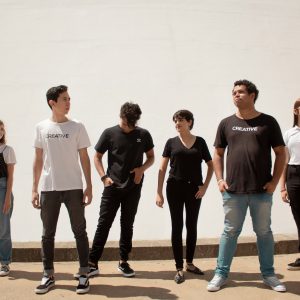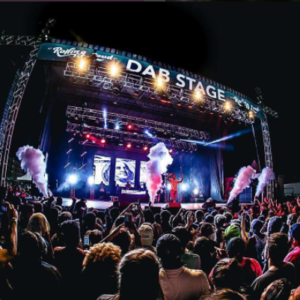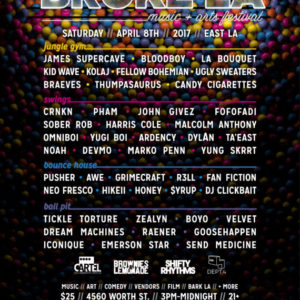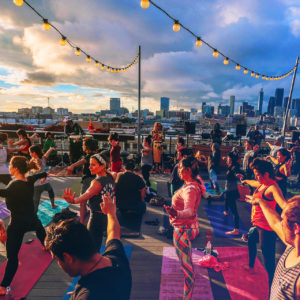 View Winners →
View Winners → Okay, sure—we at LA CANVAS can tell the difference between a hand-drip from Intelligentsia and the one-dollar machine spew that we frequently guzzle out of sleepy necessity and easy convenience. But beyond that, we can’t say we know too much about the mysterious roasted beans, even though they sort of power this whole operation.
Luckily, our expert friends over at LA Coffee Club, a new subscription service delivering fresh, locally roasted beans straight to your doorstep, have facilitated an intervention. Covering everything from roasting to brewing methods and the importance of freshness, Adam Paul and Antone Hall have agreed to take us to coffee school.
For an aspiring coffee connoisseur, what are the top three brewing methods for making the best coffee?
I think there are enough connoisseurs in the world out there already, what we need more of is people who are excited and enthusiastic about sharing their love for coffee in an approachable manner. For those looking to dive down the rabbit hole of fresh coffee, you’re gonna need to arm yourself with a few very important tools:
Start first with Fresh Beans, a Manual Brewing Device and a Burr Grinder. (You’ll probably want a scale with grams and a goose-neck kettle while you’re at it.) Coffee hits peak freshness levels within two weeks of roasting. Check the date on the bag to make sure your coffee is fresh and keep your beans in an airtight container away from moisture at room temperature.
A quality burr grinder may be the most expensive and important element of your home brewing setup, though a hand grinder can be a great cost-saving alternative and helps build strong muscles! Just make sure to steer clear of blade grinders which do two things to fight freshness: FIRST—blades result in a bunch of different grind sizes, big chunks and fine powder make sour and bitter coffee extracted at different ratios. Second—the high speed rotation of the blades creates heat and can sort of “cook” your coffee before its brewed – releasing the important gases that hold all the flavor in each bean.
Our favorite “pour-over” methods are Aeropress, Chemex and Clever (though many may be familiar with the Hario V60), these methods all let you have complete control over each variable of the brew (Grind Size, Water Temperature, Ratio of Water, Steep Time, Filter Type.) A visit to brewmethods.com might help you visualize and learn all the different types. One of the most interesting however is the Siphon which looks like something out of Walt Whitman’s basement meth lab. It’s most often referred to as “The Coffee Bong.”
What are some different attributes (taste, side effects, etc) to coffee beans roasted in various ways?
According to artisan coffee roasters, every coffee bean has a point in which it “sings” in the roasting process. Each roaster may have an individual preference as to where that exact mark is. This sweet spot is found through a process of test roasting and blind cuppings over the course of several days to see how the coffee changes over time. Specialty coffee tends to lean closer to the lighter side of roasting as opposed to dark roasted coffee which has a sort of “charred” taste. These coffee beans are roasted lighter to accentuate the individual flavor nuances inside of the bean. For example, a coffee from a particular region may carry a natural blueberry or citric quality, while others may leave a taste of chocolate or honey flavors on your tongue. This practice of light roasting coffee was previously unheard of due to the lack of quality beans that were available. Thanks to direct trade agreements and sustainable farming practices at origin, we’ve seen better access to higher quality coffee beans and thus higher quality coffee in your cup. Climate change is the number one concern facing specialty coffee today, making sourcing quality coffee harder and harder.
What made you and Adam want to go into the subscription coffee business?
We didn’t initially intend to end up in the coffee subscription business—it sort of happened organically after collaborating with a non-profit organization to create a donation coffee product that would be used to raise awareness on the global issue of human trafficking. We partnered with a local roaster who had formed a direct trade agreement (see: better than fair-trade) with a plantation in Papua New Guinea that allowed for all 1,000 laborers who worked on the farm to have their health care, housing and education paid for completely by charging an extra .22 cents per pound sold. The idea of a subscription was suggested to us by the roaster because of the built-in repeat customers. At the time a group of coffee lovers had began gathering at our local co-working location once a month. We dubbed this meetup the LA Coffee Club. Eventually the needs of the two projects merged, and it being the holiday season, we decided to create a program that would allow anyone the opportunity to access fresh, locally roasted coffee—from all of LA’s roasters— via a coffee of the month club. It just so happened that there were enough roasters in the city to allow us to feature one new roaster every two weeks for the whole year without repeating one during the year!
Is it just about finding supreme coffee beans, or is there a bigger picture to LA Coffee Club?
The big picture? It’s not about the best beans in the world, or really even about just coffee. It’s about helping people explore their community and the planet. It’s about bridging the gap between cultural boundaries of consumers and producers. It’s about being inspired and having an outlet for creativity & freedom of expression. Coffee is simply the catalyst that brings us all together.
Do you go through any criteria to determine which roasters fit LA Coffee Club?
Here’s the strict criteria each roaster had to meet:
1. The roasting facility has to be in Los Angeles ( or within an hour’s drive )
2. The beans have to be picked up on the day of roasting ( or within 24 hours )
3. The supply Chain must be transparent and ethical
4. The selections are all unique and accentuate each roaster’s creative packaging and diverse roasting style.
We know there are special teas used as home remedies, be honest with us, are there coffee beans out there that can help ease the common cold, hangover, etc?
Though we can’t legally make any health claims about drinking coffee, I can tell you from experience one thing. If you have never drank coffee before, prepare to have a seriously new relationship with gas and your ass. Nuff said.
How do you and Adam enjoy your coffee?
Our best tactic in doing so has been to keep the conversation about freshness. Simply shifting the conversation from something so subjective like taste preference to something relatable like a face or a date. The idea is that the first step to enhancing your coffee taste is by using beans that are fresh! Freshly roasted, freshly ground & freshly brewed. That is something anybody in coffee can agree on. The rest comes down to personal preference.That’s our “Fresh POV”: Fresh Coffee as a Creative Lifestyle that is open to All.
For more information visit: lacoffeeclub.com/
Words & Interview by: Ashley Tuttle
Photos by: photo by Rios Enriquez












































































































